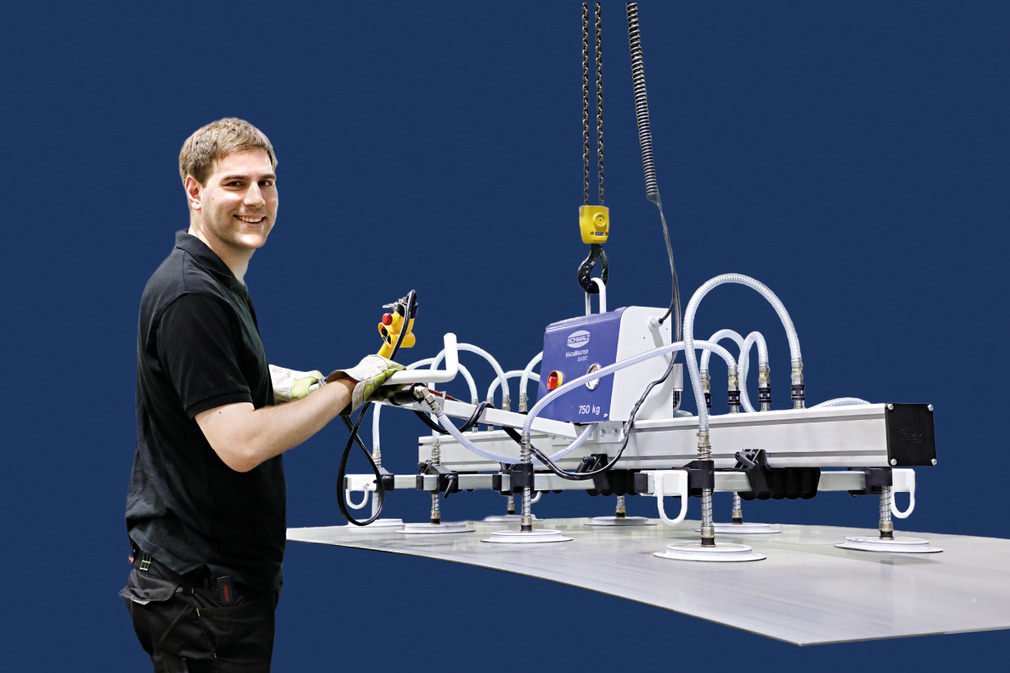Occupational safety and standards
Rules that protect. Solutions that support. People who matter.

Work must not harm employees' health. On the contrary, workplaces should help preserve it. Various laws have been introduced in Germany with the aim of preventing accidents at work and illnesses and making work more humane. First and foremost is the Occupational Health and Safety Act. Additional regulations and directives specifically govern the ergonomic design of workplaces, including the use of lifting aids and technical equipment. These measures ensure that work remains not only productive, but also back-friendly and sustainable.
According to Section 5 ArbSchG, employers are obliged to assess hazards in the workplace. The Load Handling Ordinance applies to the lifting, carrying or moving of heavy loads.
Employers should create workplaces that promote safety and health so that they effectively protect their employees from accidents and health risks.
To keep the body safe and make work easier, employers are obliged to use work equipment safely and ergonomically. DIN EN ISO 9241 provides practical guidelines on how workplaces can be designed to promote health.
The German Social Accident Insurance supports companies in making their workplaces safe. With practical checklists, you can identify risks at an early stage and protect your employees effectively.

Occupational health and safety laws are the foundation for protecting the health of every individual. Those who comply with them are not only investing in legal certainty, but also in a company's most important asset - its employees. Ergonomic solutions turn this foundation into lived reality.∼ Sven Kummer, Occupational Safety
How much load an individual can carry depends on individual factors such as age, gender and physical condition. The Load Handling Ordinance (LasthandhabV) obliges employers to check manual load handling for safety and health and to assess hazards. No fixed guide values are specified for the portable load. As a result, guide values have been developed, for example in the so-called Hettinger table:
| Activity | Gender | Age in years | Reasonable load in kg depending on the frequency per shift | |
|---|---|---|---|---|
| occasionally < 5% | frequently > 10% | |||
| Lifting/carrying | Men | 15 - 18 | 35 kg | 20 kg |
| 19 - 45 | 55 kg | 30 kg | ||
| > 45 | 45 kg | 25 kg | ||
| Women | 15 - 18 | 15 kg | 10 kg | |
| 19 - 45 | 15 kg | 10 kg | ||
| > 45 | 15 kg | 10 kg | ||
Occupational health and safety is essential in order to avoid health complaints among employees and to maintain performance. At the same time, occupational health and safety places great emphasis on prevention: in addition to accident prevention measures, ergonomic measures are also mandatory. In contrast to accidents, which cause immediate damage to the body, one-sided strain, improperly performed movements or monotonous activities as well as overloading often lead to gradual damage to health. Ergonomics is therefore a central component of preventive occupational health and safety and should not be neglected in everyday working life.
The STOP principle shows how prevention can be implemented in a structured way. The vacuum lifters from Schmalz fall under the technical measures of the STOP principle. They make lifting heavy loads easier and reduce physical strain, effectively preventing musculoskeletal injuries. As technical solutions, they sustainably improve occupational safety without having to rely on behavioural changes or organizational adaptations.

Less back pain, more power: ergonomic working protects your employees and your company.

Unergonomic workstations cost time and money - find out how you can increase efficiency.

Musculoskeletal disorders are the main cause of employee absences. We show you how to minimize the risks.

More ergonomics in everyday life: Discover our success stories on ergonomic handling.

Johannes-Schmalz-Str.1
72293 Glatten
Germany